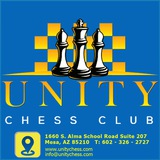The pawn ending is lost: 33 Rxc7 Kxc7 34 Kg3 Kd6 35 Kh4 Kd5 36 Kxh5 Kd4, and wins. If 33 Rf8, then 33...Rc2+.
34 a4?! (this move, weakening the queenside pawns, actually makes Black’s job easier) 34...Kd4 35 a5 Kxd3 36 Rf3+ Kc2 37 b4 b5!
38 a6 Rc4 39 Rf7 Rxb4 40 Rb7 Rg4+ 41 Kf3 b4 42Rxa7 b3 White resigned.
38 a6 Rc4 39 Rf7 Rxb4 40 Rb7 Rg4+ 41 Kf3 b4 42Rxa7 b3 White resigned.
The straightforward king march to the kingside pawns comes too late: 1 Kc5? h5! 2 Kd4 (intending 3 Kd3) 2...Kb1 3 Rg1+ c1Q 4 Rxc1+ Kxc1 5 Ke3 (with the king on d5 or d6, White could go after the g7-pawn; but from d4, the road is much too long) 5...Kc2 6 Kf4 Kd3 7 Kg5 Ke4, and wins; 1 Kc6? h5! 2 Kd6 h4! 3 Ke6 h3 (Black has won a vital tempo) 4 Rh2 Kb1 5 Rh1+ c1Q 6 Rxc1+ Kxc1 7 Kf7 h2 8 Kxg7 h1Q, and wins.
The “strategic double attack!” This move not only brings the king closer to the g7-pawn (as may be seen in the variant 1...Kb1 2 Rg1+ c1Q+ 3 Rxc1+ Kxc1 4 Kd7 h5 5 Ke7 h4 6 Kf7 h3 7 Kxg7 h2 8 f6 h1Q 9 f7 =), but at the same time prepares a completely different idea.
1...h5! 2 Kb8!! Kb1 (the same reply comes after 2...h4) 3 Rxg7! c1Q 4 Rb7+ =.
On 1 Rh3? c4+! 2 Kxc4 a2, White’s in zugzwang. For example: 3 h6 (or 3 Kb4 c5+ 4 Kc4 h6!) 3...c5! (both sides have used up their extra pawn moves at the same time) 4 Rg3 (4 Kd3 Kc1 wins) 4...Ke2 5 Rg2+ Kf1 and wins (on the g-file, the rook is too close to the pawn - only two files between them!) So White must lose a move!
1...a2? 2 Rg1+ Ke2 3 Kc2 would be a mistake - White wins; and Black gets nothing out of 1...Kc1 2 Rc3+ Kb1 3 Rd3.
